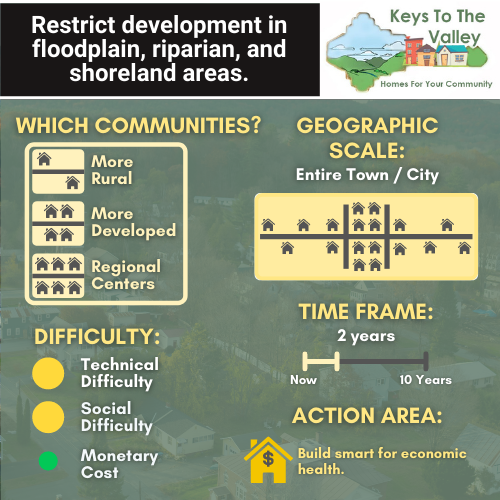Communities should prohibit residential development in floodplain, riparian, and shoreland areas. These policies protect homes and residents from damage and pain, and help maintain or restore the natural ecosystem functions that help to mitigate flooding of benefit to all residents and municipal fiscal management.
The floodplain areas should be reflective of available floodplain data and local knowledge. Riparian and shoreland areas are best identified through buffers that vary depending on the type of waterbody, including rivers, ponds and lakes. For example, larger rivers, or those of a higher stream order, should have more significant buffers. Available regulatory tools include, but are not limited to, the following:
- Flood hazard area regulations or ordinances
- River corridor/fluvial erosion hazard regulations
- Development setbacks along surface waters, with optional buffers for additional ecological benefit
- Property buyouts of repeat flood damaged properties
- Acquisition/purchase of development rights of important floodplain areas and application of needed restoration
Additional Resources:


